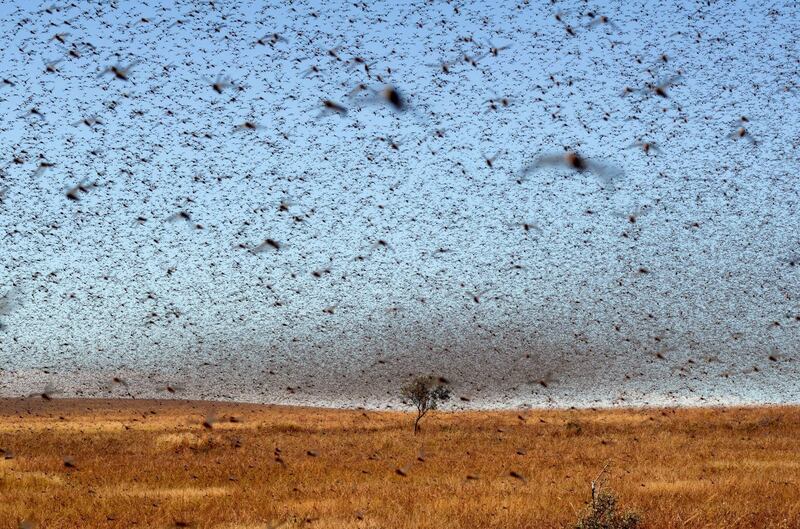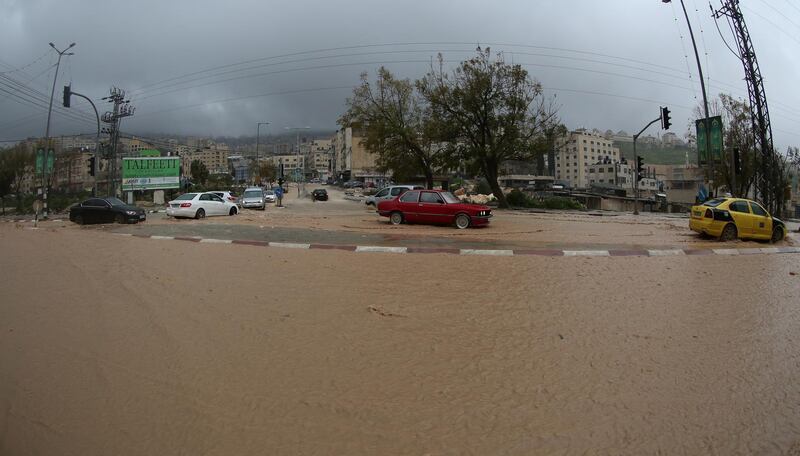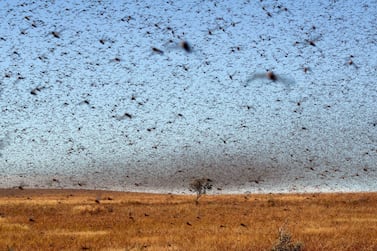A cold front bringing heavy rain and northern winds has saved Jordan from an invasion of desert locusts from neighbouring Saudi Arabia this week, with UN experts now monitoring for fresh swarms expected to cross from East Africa to Saudi Arabia in March.
Jordan was on alert for the arrival of locusts after southerly winds were forecast to carry over a swarm from western Saudi Arabia. However, after one day of southern winds on Monday, a cold front and shift in winds from the north deterred the movement of the insects and brought heavy rains and cold temperatures to the kingdom that are expected to continue until Saturday.
"The current threat to Jordan is now very low because the prevailing winds from the north and desert locusts cannot move against the wind," Keith Cressman, senior locust forecasting officer at the Food and Agriculture Organisation, said in an email to The National. "There is no need for unnecessary panic or alarm."
Rather than a plague of locusts, Jordanian authorities found themselves battling floods, collapsed buildings and closed roads as heavy rainfall continued on Thursday in what the Jordan Meteorological Department billed as the heaviest rains of the winter season.
The locust threat was treated as a national emergency in Jordan, which relies on agriculture for 4 per cent of GDP, and exports produce to Iraq, the Gulf and Europe.
Adult locusts can eat their body weight in fresh vegetation every day and even a small swarm can eat enough food for 35,000 people in just 24 hours, according to the the FAO.
Jordanian authorities had formed an emergency anti-locust committee and mobilised the air force and army to prepare for an invasion of the insects.
Farmers in Aqaba and elsewhere in southern Jordan reported seeing isolated clusters of locusts earlier this week, but the anti-locust committee said they were only grasshoppers, a normal springtime visitor that might cause slight damage to crops but does not present a threat.
The ministry of agriculture confirmed that there had been no sightings of locusts and that, with the arrival of the cold front, they were no longer expected to reach Jordan.
FAO experts are now watching for fresh locust swarms migrating to Saudi Arabia from Eritrea and Sudan.
“At present, there is a risk that a few small immature swarms could form on the Red Sea coast of Eritrea and Sudan in those areas where infestations were not detected or could be treated,” Mr Cressman said. “These swarms could move across the Red Sea to the coast of Saudi Arabia and to the interior during March, where one generation of breeding is expected to occur from March to June.”
Besides locusts from Eritrea and Sudan, rainfall from cyclones Mekunu in May and Luban last October created conditions for mass breeding in Saudi Arabia’s Empty Quarter, near the Yemen-Oman border, with hatchings recorded south-west of Madinah on the kingdom’s west coast.
Due to favourable weather and agricultural conditions in Saudi Arabia, UN experts do not expect the locusts to spread beyond the Saudi interior, meaning that other countries in the Gulf and Jordan and Iraq will probably be spared plagues of the highly destructive pests.
A female locust can lay about 300 eggs in her short life, meaning swarms can grow to hundreds of millions of individuals and measure miles across. They have the ability to strip land bare as they fly through.
Tackling swarms is also made difficult because the locusts are highly mobile, able to fly up to 150 kilometres a day.
















